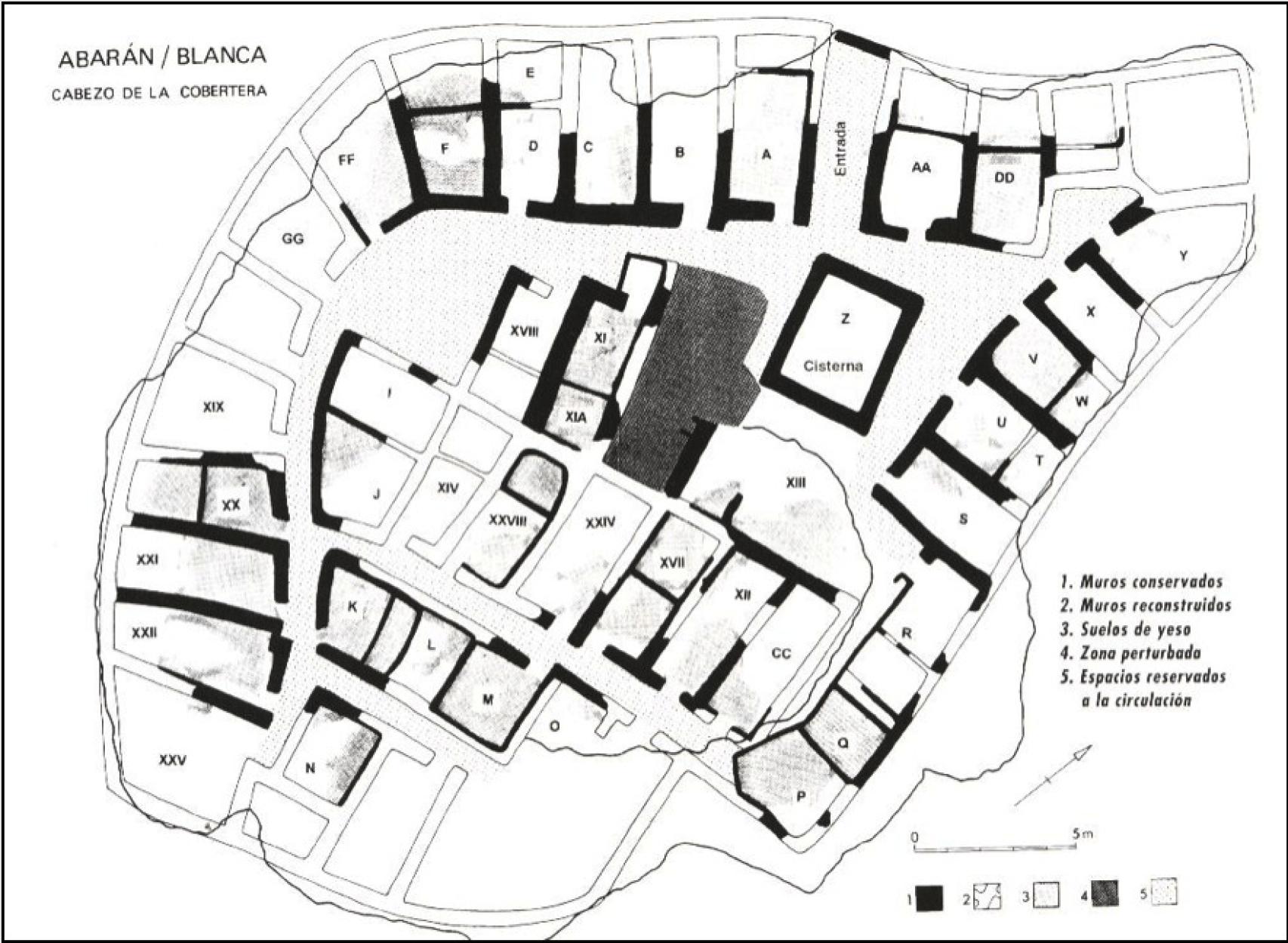Related news
The archaeological site of Cabezo de la Cobertera, located in Abarán (Murcia), and which houses the only Andalusian fortified barn in Spain, has just been included in the Red Heritage List produced by the Hispania Nostra association due to the risk that it will disappear if we do not act immediately.
In a statement, this organization has indicated that, despite its relevance, this site is in a situation of marked deterioration due to carrying 30 years out in the open and subject to vandalism, no conservation intervention having been carried out since it was excavated between 1988 and 1990.
According to Hispania Nostra, the “administrative relaxation” It has allowed the loss of height of the structures of the site, essentially composed of gypsum and stone masonry and earth walls, with elevations ranging from one meter to 20 centimeters high.
Plan made during excavations at the site.
Spain
If we continue in this regrettable state of abandonment, the strong wind, torrential rains and the malice of the hand of man will eventually make this disappear. Asset of Cultural Interest (BIC), has warned the association for the defense of heritage.
For all these reasons, the archaeological site has been added to a list that includes about 950 Spanish monuments They run the risk of disappearing if they do not act immediately.
Conquest
The three campaigns carried out between 1988 and 1990 revealed the existence of a fortified collective granary of Berber tradition from the end of the Almohad period (12th and 13th centuries), constituting the first to be excavated in the Iberian Peninsula.
According to the researcher Jesus Joaquin Lopez Moreno, the fortified granary or “agadir” belonged to the Andalusian farmhouse of al-Darrax, located in the north of the Ricote Valley.
The farmhouse arose to put into agricultural production a grove of the Segura river, whose garden was irrigated with a river wheel in the Moorish period (16th century). As its toponym indicates, the farmhouse must have been founded by the Banu Darrax, tribal fraction of the Sinhaya Berbers.
The archaeological intervention revealed that the fortress was in force between the 11th and 13th centuries and is cited on April 15, 1244, when “the castle of Aldarache with its villa” were handed over to the Lord. Sancho de Antillón.
The enclosure was devastated, in 1266, with the military action that dominated the Mudejar uprising. From the year 1285, the territory of the farmhouse came under the responsibility of the Santiago commission of Ricote, whose population was mainly Mudejar.
Al-Darrax was also cited on May 16, 1304, when Jaime II He granted the income of his neighbors to the Maghrebi leader Alabbez Abenrraho and his host. Finally, the farmhouse was depopulated during the 14th century.
Hispania Nostra currently includes 39 monuments and sites located in the Region of Murcia on its red list of heritage in danger of disappearing.
Follow the topics that interest you
Reference-www.elespanol.com
